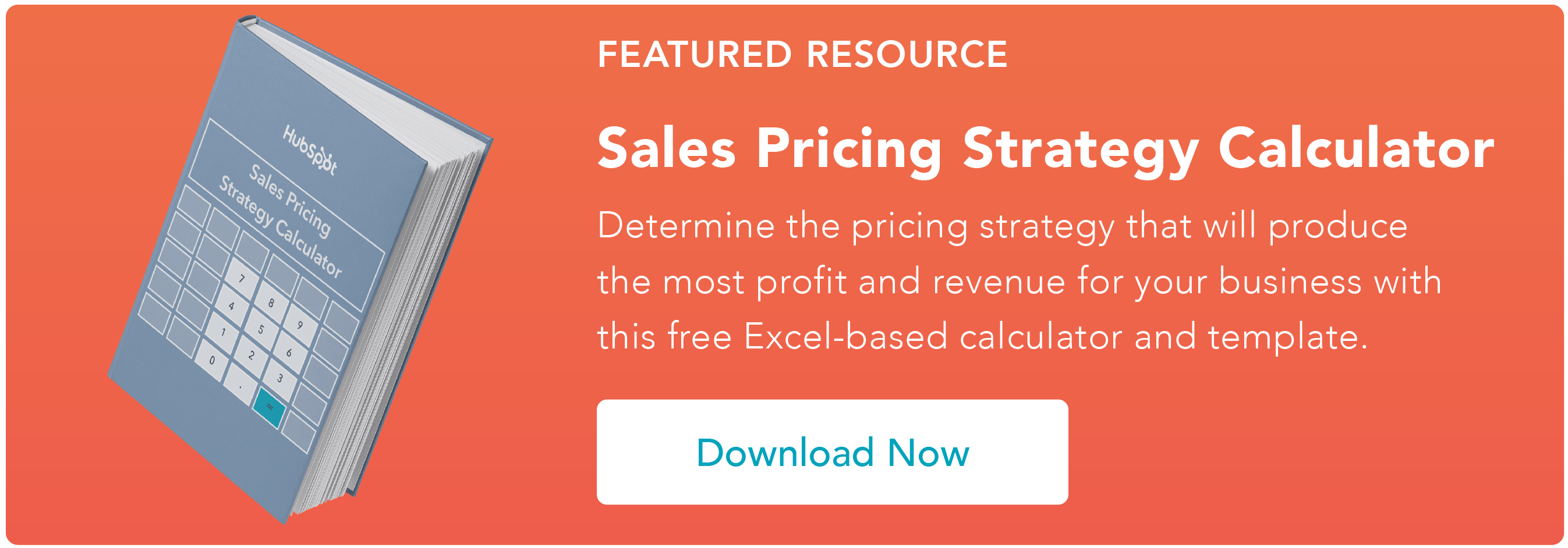10 Key Steps to Preparing for a Successful Price Negotiation
1. Confirm that there is actually a deal to negotiate.
First and foremost, you need to be mindful of where a deal stands before you engage in a price negotiation. Make sure you‘re not rushing into a closing call or trying to leverage a discount to force a deal’s timing.
Salespeople who do this think that pricing is the distinguishing factor for a purchase — and that‘s an easy mistake to make. Pricing is discussed in nearly every deal, but it’s rarely the key trigger to buy.
Your prospect needs to see the tangible value your product or service can bring before you can prepare for a pricing negotiation. So do your homework, and have a solid pulse on whether a deal is immediately viable before you lock in on price.
2. Understand your contact's decision-making authority.
In many cases, you‘ll be talking directly with a contact with decision-making authority — someone who can make the economic call and sign the deal. That said, in some select situations, you’ll work with an advocate who can get all of the details and relay the information to the actual buyer.
You need to remain mindful of this. Negotiating with someone who can‘t buy is one of the easiest ways to have a price negotiation go sideways. You always have to have a pulse on the level of influence your contact has. Some good questions to gauge a contact’s decision-making authority include:
- What have you talked about during this process?
- Who besides yourself is part of the decision?
- How will you make this decision together?
- Have you done this type of purchase before?
- How do you actually buy products and services (payment method)?
- What do you think your boss will be looking for?
- Will your boss be able to commit to purchasing on the call?
3. Explain what a good outcome looks like in advance of the conversation.
Make sure you establish realistic-but-ideal expectations of what this conversation will cover before you have it. Here's what that might sound like:
“We can set up this call to talk about pricing, but for me to get a discount approved it’s better if we have all the people on the call. This way, everyone who can make the decision is in one place and we’ll be able to finalize the deal on the call or shortly thereafter.”
With that, you can clearly set agreeable expectations. This also gives you the space to do things like establish whether a prospect is positioned to start immediately after closing or clearly define exactly how they'll pay you.
4. Make sure your prospect is aware of your product’s ballpark price.
The inbound sales process suggests that you introduce general pricing during discovery to set the right expectations. It can be awkward when the prospect has a completely different range expectation for your solution than your standard pricing — and it’s not a good use of your time to run through an entire sales process only to find that, despite a need, the most your prospect can pay is far below the deepest discount you can give.
5. Familiarize yourself with your company's standard discount guidelines.
Standard discount guidelines are typically in place for a reason and can give you an idea of whether it will be easy or hard to get through the final process. Remember, you have a responsibility to both your buyer and your company — and slashing prices far below what’s suggested will hurt your business in the long run.
6. Come to the table prepared with multiple discount options.
Don’t think about discounts as just 10% off sticker price. There are other creative options available to you — changing payment terms to quarterly instead of a year upfront if your prospect has cash flow issues, for example.
Other options include flexibility on payment type and the amount of upfront investment you require. And you can design these based on what you know about the account’s bottom line and their business needs. Also, you don’t have to jump to round numbers — something like an 8.5% discount can be effective in some scenarios.
7. Set an agenda and start with a strong opening question.
If you can set the agenda when you set up the calendar appointment, it can help set the right expectations. Here’s an example agenda I would use on a closing call:
- Welcome and Introductions
- Prospect’s Current Status
- Options to Get Started
- Q&A
Asking everyone to state their name, title, and level of understanding of your offering is a great way of knowing if you have the right people on the call. A price negotiation rarely requires a lot of rapport-building. Most clients want to get through this process as efficiently as you do.
After this initial introduction phase, start with a direct opener, like, “Michelle, what’s your team’s current status?”
This gets the prospect talking and gives you an indication of where they are at in the process. Over time you will be able to tell via their voice tone whether a prospect has come prepared to get a deal done.
8. Leverage your team.
Price negotiations are a perfect time to practice team selling. When you are new to the process, bringing another person to the call to lead — especially with a manager or executive, so that you can concentrate on the discussion at hand — can help accelerate your skills.
9. Set up a preparation call the day before.
If you're new to the price negotiation process, setting up a practice call the day before your conversation is essential — kind of like batting practice. Review the details of the deal with your manager, along with other key elements like the prospective discount and potential objections.
You should run through the three reasons why the client will buy and the three reasons they might be hesitant — and understand how you will address those remaining issues if they come up.
10. Have a method of payment ready to go.
If you can close the deal during the conversation, have a payment link or invoice ready to go that the prospect can fill out over the phone or shortly thereafter — so once negotiations are concluded, you don’t waste time getting started.
Price negotiations are often delicate and challenging by nature — but with proper preparation, they don‘t have to be imposing. So if you want to ensure that your price negotiations go as smoothly as possible, make sure you’re covering all of these bases and approaching these conversations with tact and confidence.
.png?width=112&height=112&name=Image%20Hackathon%20%E2%80%93%20Vertical%20(45).png)



.jpg)

